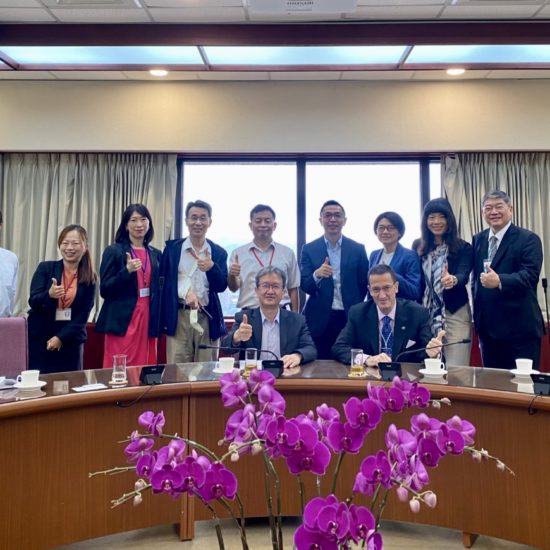Floating wind energy in Taiwan

The ECCT’s Wind Energy committee arranged a lunch featuring guest speaker Dr Yu Cheng-Wei, Director-General of the Bureau of Energy (BOE), under the Ministry of Economic Affairs (MOEA). At the event, DG Yu gave an introduction to Taiwan’s future floating offshore wind energy policies and development plans. He also gave a briefing on his recent fact-finding visit to Kincardine, the world’s largest floating offshore wind energy farm, located 15km off the coast of Aberdeenshire in Scotland.
DG Yu noted that floating wind energy was still at the early stage of development globally with only 121MWs of capacity installed globally at the end of 2021 and only in six countries so far (the UK, Portugal, Norway, China, Japan and France). However, it will account for a growing part of the energy mix in the years ahead as the supply chain develops and the energy transition progresses.
The BOE recognises that there is potential for floating platforms as part of Taiwan’s future energy mix. However, more data is needed to decide on the best locations and what type(s) of technologies are most suitable for the harsh conditions in the Taiwan Strait. That is the rationale for the decision to proceed first with a Floating Offshore Wind Power Demonstration Incentive Program (DIP).
The BOE held a public meeting on 5 August to gather the opinions of stakeholders while the vice premier invited relevant industry players to a seminar on 11 November to seek opinions and discuss the planning direction of the demonstration project. The purpose of the project is to evaluate the feasibility of regulation, technology and infrastructure. The government initially announced tentative plans for two demonstration projects, each with a capacity of no more than 50MWs that would be supported by Feed In Tariffs (FITs) and commence in 2026. However, Yu acknowledged that feedback from the industry suggested that the scale of the demonstration projects was too small and that the schedule should be pushed back to 2027-2028. Other feedback stressed the need for additional and suitable port infrastructure and specialised vessels to cater to the needs of floating offshore wind energy developers. According to Yu, the BOE is now reviewing the feedback, revising its draft with a view to presenting an updated plan by the end of the year and the goal of completing the selection process by 2023.
Commenting on his visit to Kincardine, Yu said that he had visited the project in person. It is in water with a depth of 60-80 metres and has five 9.6MW turbines installed. He spoke with developers about the entire development process. Following the trip he said that he is confident Taiwan will be able to build floating wind energy farms in Taiwan. However, since the assembly and construction process is different from fixed platform turbines, the infrastructure, equipment and training demands will be different.
In the Q&A session, Yu said that the government will remain open to discussions and suggestions from industry players. On the subject of local content requirements, he said that this remains to be determined pending a study of Taiwan’s ability.
On a question about the shortage of green energy, Yu made the point that while Taiwan is committed to transitioning to clean power sources, its priority is to maintain energy stability. He noted that Taiwan’s projected future energy needs have taken into account the planned expansion of the semiconductor industry and reshoring by other industries.

